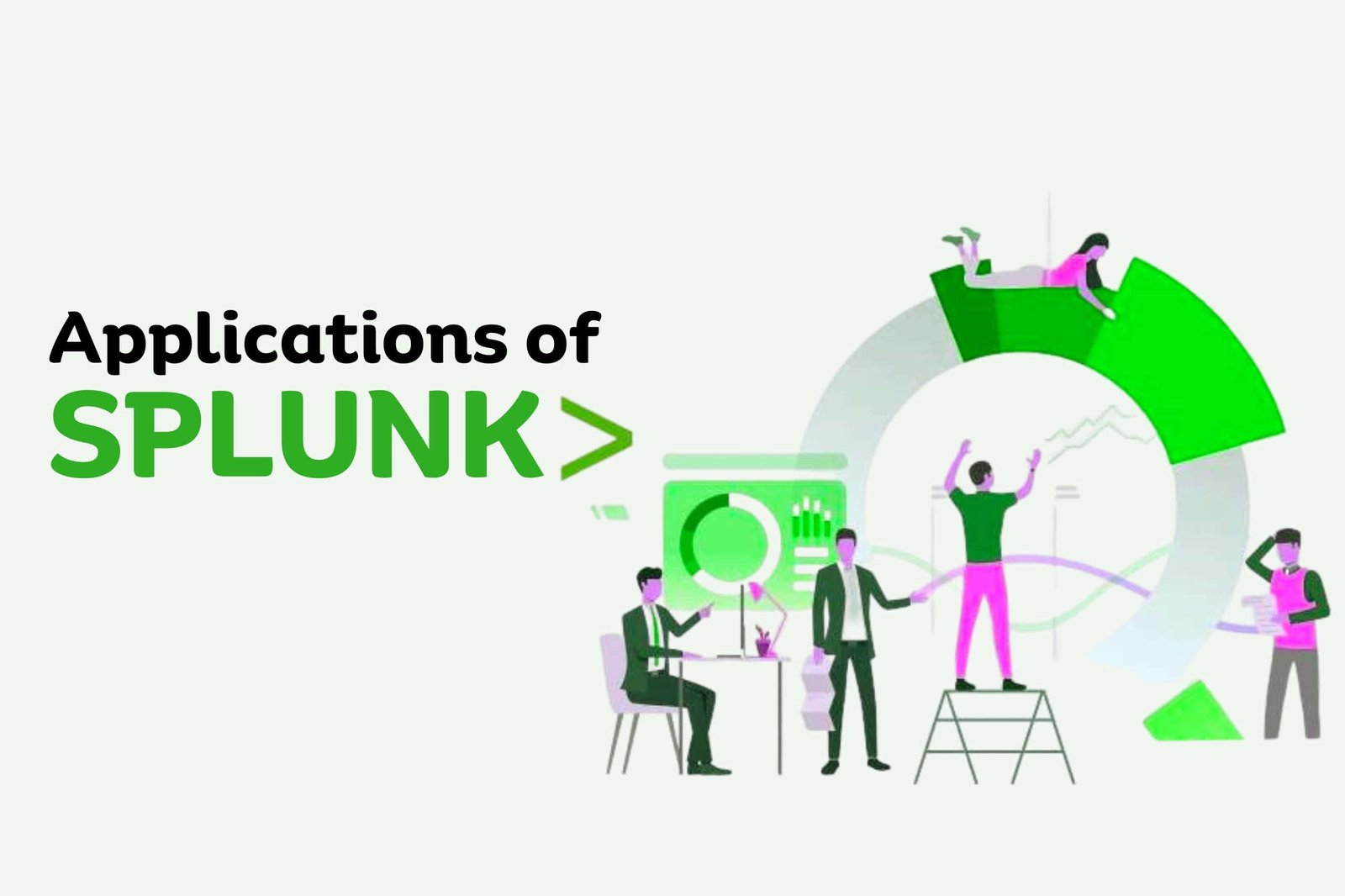Data Analysis is significant as it helps accurately assess data that drive data-driven decisions. Different tools are available in the market that help in the process of analysis. Amongst the popular options, we will be discussing Splunk. It is a powerful and widely-used platform that revolutionises how organisations analyse and derive insights from their data. Read ahead more about Splunk Tutorial For Beginners and its key features.
What is Splunk?
Splunk is an industry-leading software. It initiates the collection, indexing, and analysis of machine-generated data in real-time. The tool is loaded with features, thus making it a popular choice for businesses.
It helps harness the power of big data and turn it into actionable intelligence. Moreover, it allows users to ingest data from different sources. Additionally, Splunk can process and index massive volumes of data. Thus supports advanced search and analysis functionalities. Eventually, it enables the user to gain valuable insights and uncover hidden patterns and trends within their data. Consequently, it boosts the decision-making process.
Furthermore, The platform’s versatility extends beyond data analysis. Some of the applications that it supports are:
- IT operations and monitoring
- Security information and event management (SIEM)
- Business Analytics
- DevOps
Overall, it empowers organisations to proactively monitor their systems, detect anomalies, and take the necessary measures to overcome them.
Key Features of Splunk:
- User-friendly interface
- Powerful search capabilities
- Extensive ecosystem
All these key features of Splunk make it a mandatory addition for organizations willing to achieve competitive excellence and unlock new business growth potential.
Splunk is a powerful platform. The following segment highlights the key advantages and disadvantages of Splunk.
Advantages of Using Splunk:
- Real-time Visibility: One of the significant advantages of Splunk is its ability to provide real-time data visibility. Thus, it lets users gain insights from vast data in real time. Thereby enabling faster decision-making and problem-solving.
- Centralised Data Platform: Splunk is a centralized platform that enables users to collect, index and analyse data from different sources. Additionally, it also supports a host of data formats. Its ability to provide a unified view of the data makes it easier to manage it.
- Search and Investigation Capabilities: One of the unique features of Splunk is that it allows better data analysis. Since the user can easily find the information in real time, the analysis is more precise. Besides, it also offers features like keyword highlighting and drill-down capabilities.
- Scalability and Flexibility: This tool can easily produce a large volume of data. Moreover, the flexible deployment option makes it easier for organizations to get tailored results. Furthermore, Splunk can adapt to different environments, Whether on-premises, cloud, or hybrid.
- Security and Compliance: Splunk provides robust security features to protect sensitive data. Its encryption, role-based access controls, and auditing capabilities features maintain the confidentiality of data.
Disadvantages of Using Splunk:
- Complexity: Although Splunk is loaded with features, it may take some time for the user to learn. Moreover, one needs to have some proficiency in data analytics and query languages. Beginners may initially find it overwhelming and require training and practice to utilise its full potential.
- Cost: Splunk is a commercial product, and the tool is available at some cost. Now this can be challenging for smaller organizations that have pressing budgets. The pricing structure is based on the volume of data ingested, which can add up quickly for large-scale deployments.
- Resource Requirements: Splunk’s data processing and indexing can consume significant system resources. Additionally, large data volumes and complex search queries may require high-performance hardware infrastructure, leading to additional costs.
- Maintenance and Upgrades: Splunk requires regular maintenance and upgrades to ensure optimal performance and security. Also, organisations must allocate resources and plan for these activities to keep the platform current. This can add up to the cost.
How Will Splunk Help in Career Growth?
Individuals with expertise in Splunk have great potential for professional growth and success. Let’s explore how Splunk can help in career growth and why it is a valuable skill.
Splunk offers a range of job roles and opportunities across different industries. Some of the popular job opportunities in this domain are:
- Enhance Data Analytics Skills: Splunk’s robust analytics capabilities allow professionals to analyse and interpret complex data sets. Learning Splunk equips individuals with valuable data analysis skills, which are highly sought after in today’s data-driven world.
- Become a Splunk Administrator: As Splunk administrators, individuals can manage and optimise Splunk deployments, ensuring smooth operations and efficient data management. This role involves configuring data inputs, managing users and permissions, and monitoring system performance.
- Explore Security and SIEM: Splunk is widely used in cybersecurity for security information and event management (SIEM). Professionals in Splunk can leverage this expertise to work on security-focused projects like threat detection, incident response, and vulnerability management.
- Advance in IT Operations: Splunk’s operational intelligence capabilities make it invaluable for IT operations teams. By utilising Splunk, professionals can monitor and troubleshoot systems, perform capacity planning, and gain insights for operational improvements.
- Embrace Big Data Analytics: With data’s exponential growth, organisations increasingly rely on big data analytics. Splunk’s ability to handle large volumes of data and provide real-time insights positions professionals to excel in the big data analytics field.
Splunk certifications, such as the Splunk Certified User and Splunk Certified Power User, validate one’s proficiency in using Splunk and can significantly boost career prospects.
Applications of Splunk:
Splunk finds applications across various industries and domains. Let’s explore some of the key applications of Splunk:
- IT Operations and Monitoring: Splunk helps organisations monitor IT infrastructure and gain operational insights. It can collect and analyse logs, track system performance, detect anomalies, and facilitate proactive troubleshooting.
- Security and Compliance: Splunk’s security analytics capabilities make it valuable for identifying and mitigating security threats. It helps with log analysis, threat detection, incident response, and compliance reporting.
- Business Analytics: Splunk enables organisations to leverage data for business analytics and intelligence. It can uncover patterns, identify trends, and provide actionable insights to drive informed decision-making.
- DevOps and Continuous Delivery: Splunk supports DevOps practices by providing visibility into the software delivery pipeline. It helps monitor application performance, identify bottlenecks, and facilitate continuous delivery.
- Internet of Things (IoT) Monitoring: With the proliferation of IoT devices, Splunk can collect and analyse data from various IoT sources. It enables organisations to monitor IoT infrastructure, detect anomalies, and optimise device performance.
What is Splunk Used For?
Splunk is a versatile platform used for various purposes, including:
- Log Management: Splunk can ingest and index log data from different sources, making searching, analysing, and visualising logs easier. It provides a centralised platform for log management and troubleshooting.
- Security Information and Event Management (SIEM): Splunk’s security analytics capabilities help organisations detect and respond to security threats. Moreover, it collects and analyses security event data, performs correlation analysis, and generates alerts for suspicious activities.
- Machine Learning and Predictive Analytics: Splunk integrates with machine learning frameworks and enables the application of predictive analytics to identify patterns and anomalies and predict future events based on historical data.
- Business Intelligence and Reporting: Splunk’s data visualisation capabilities allow users to create interactive dashboards and reports. Therefore, it helps in presenting data-driven insights to stakeholders and enables effective decision-making.
- Operational Intelligence: Splunk provides operational insights by monitoring and analysing real-time data from various sources. It helps organisations optimise processes, detect anomalies, and drive operational efficiency.
How to Use Splunk Tool?
Using Splunk effectively requires a good understanding of its features and capabilities. Here is Splunk tutorial for beginners. This Splunk tutorial, step by step will help you understand how this tool work.
- Data Collection: This step involves the collection of data from different sources like logs, files, databases, APIs, or streaming data. Splunk supports various data formats and provides pre-built connectors for popular systems.
- Data Indexing: Splunk indexes the collected data, making it searchable and ready for analysis. Configure index settings based on your requirements, including retention periods and data segmentation.
- Search and Analysis: Utilise Splunk’s powerful search language to explore and analyse the indexed data. Construct queries using keywords, filters, and operators to narrow the search and retrieve relevant information.
- Visualisation: Create visually appealing dashboards and reports using Splunk’s Data Visualisation tools. Choose appropriate visualisations such as charts, graphs, and maps to represent data insights effectively.
- Alerting and Monitoring: Set up alerts to receive notifications based on specific events or conditions. Splunk allows you to create custom alerts and define thresholds for proactive monitoring and issue resolution.
- Advanced Features: Explore advanced features of Splunk, such as machine learning, predictive analytics, and data modeling. These capabilities can help gain deeper insights, detect anomalies, and predict future trends.
Regularly maintain and optimise your Splunk deployment to ensure optimal performance and data accuracy.
FAQs
What Are the System Requirements for Running Splunk?
The volume of data, concurrent users, and deployment architecture impact the system requirements. Hence, it is recommended to refer to Splunk’s official documentation for detailed system requirements based on your specific use case.
Can Splunk Handle Real-time Data Streaming?
Yes, Splunk can handle real-time data streaming. Additionally, it provides mechanisms to ingest and analyse streaming data. Thus, enabling real-time monitoring, alerting, and analysis.
Does Splunk Support Integration with Other Tools and Systems?
Yes, Splunk offers various integrations with third-party tools and systems. It has connectors and APIs that facilitate data exchange and interoperability with other platforms, making it a versatile tool in the ecosystem.
Is Splunk Suitable for Small Businesses or Individuals?
While Splunk primarily targets enterprises, it can also be utilised by small businesses and individuals. Also, Splunk offers different licensing options, including free versions and lower-cost options, to cater to varying needs and budgets.
Are There Any Certifications Available for Splunk?
Yes, Splunk offers a certification program that validates individuals’ expertise in using Splunk. One can explore certifications like Splunk Certified User, Splunk Certified Power User, and Splunk Certified Architect. Eventually, it enhances career prospects and demonstrates proficiency in Splunk usage.
Wrapping it up !!!
Splunk is a powerful platform with diverse data analytics, security, operations, and business intelligence applications. Moreover, it offers real-time visibility, centralised data management, and robust search capabilities. However, it also has considerations like complexity and cost.
Companies can harness Splunk’s capabilities, thus unlocking new possibilities of growth. Stay updated with Splunk’s latest features and best practices to maximise this versatile tool.











